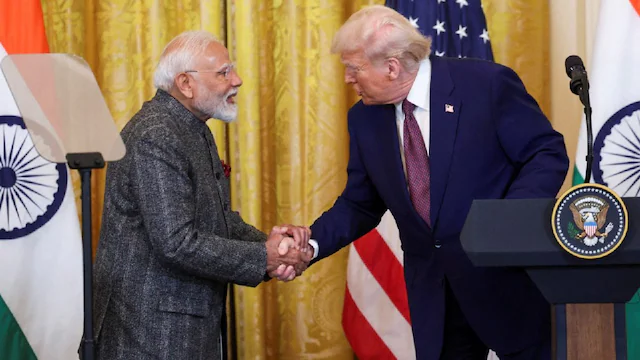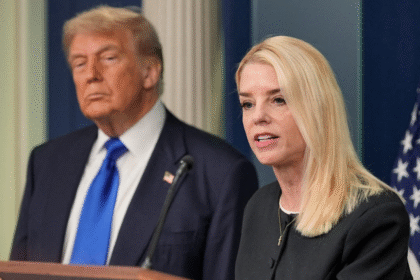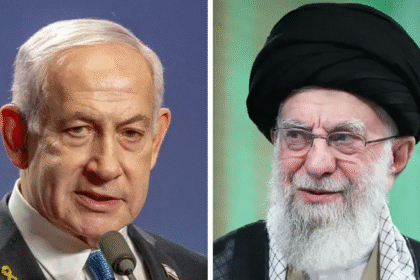India Set to Gain Big as US May Slash Tariffs Below 20% Under Trump Deal – Major Boost to Indo-US Trade in 2025
India may gain a major trade advantage as the Trump administration considers cutting tariffs below 20% in a new 2025 US-India deal—boosting exports and strengthening bilateral ties
The Trump administration is reportedly on the verge of finalizing a landmark trade deal with India—one that could reduce U.S. tariffs on Indian imports to under 20%. This strategic move would elevate India’s position in global trade, giving it a significant advantage over other Asia‑Pacific partners. Here’s an in-depth breakdown of what’s happening, why it matters, and what could come next.
According to The Times of India, the U.S. is considering lowering tariffs on Indian imports to below 20%, specifically favoring India over other countries This decision forms part of a broader strategy to strengthen ties with selected nations amid reciprocal tariff negotiations.
This potential tariff cut is timely. Recall that the Trump administration in April introduced sweeping “reciprocal tariffs”—including a 10% baseline tariff and additional country-specific duties ranging from 20% to 50%, designed to pressure major trading partners to negotiate bilateral agreements
Strategic partnership: India is the U.S.’s biggest trading partner outside its traditional allies, with bilateral trade reaching $190 billion in 2023nd goals stretching toward $500 billion by 2030
Reciprocity push: The U.S. is applying its “America First” doctrine, aiming to fix trade imbalances. India, with its average tariff of 12–17%, contrasts sharply with the U.S.’s average of 2–3%
Negotiation leverage: India escaped the first round of Trump’s tariffs in early 2025 through back-channel diplomacy signaling mutual interest in a formal treaty.
PM Modi’s visit to Washington (Feb 12–15), highlighted by their “Mission 500” agreement targeting $500 billion in annual trade by 2030
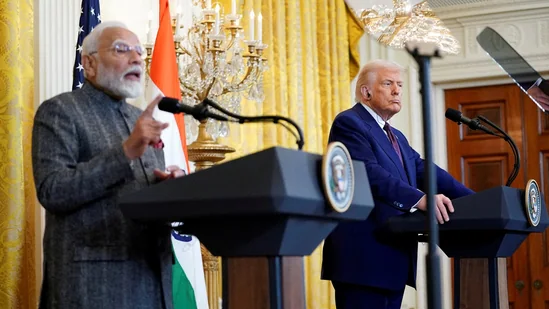
India signaled willingness to cut tariffs on U.S. goods worth $23 billion, focusing on luxury items like bourbon, nuts, EVs, and automobiles
The U.S. enacted a 10% baseline on all imports starting April 5, with an extension pause until July 9
A U.S. court briefly blocked, then allowed the tariffs to remain in place, increasing urgency in trade talks
Indian officials confirm that no formal commitments were made yet; negotiations are ongoing and likely to extend into autumn 2025
Current U.S. tariffs on India: Largely ranging from 20–26% on non-agricultural goods, plus a base 10%
India’s tariffs on U.S. imports: Averaging 12%, with peaks for categories like alcohol (150%→100%), motorcycles (50%→40%), dairy, and automobiles
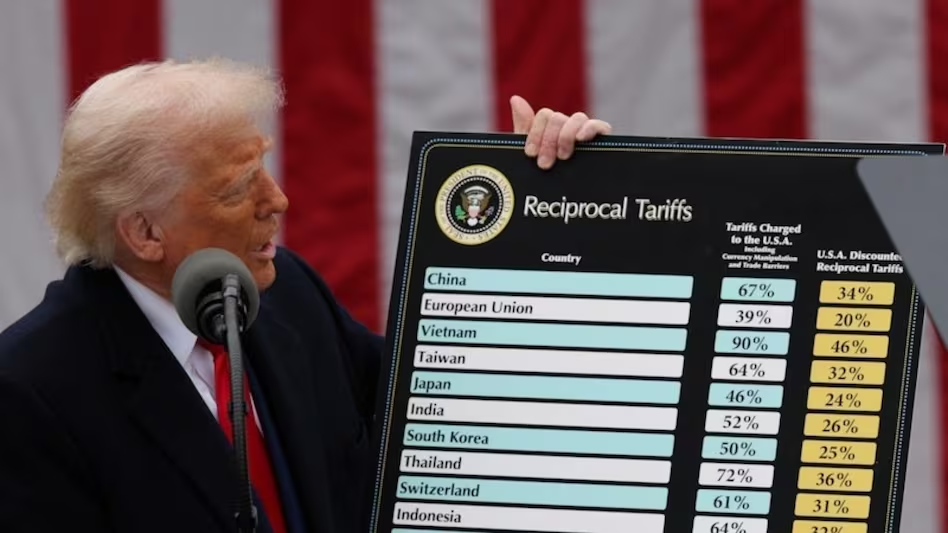
Proposed U.S. cut: Bringing Indian export tariffs below 20%, improving market access and competitiveness.
Reducing bourbon whiskey tariff from 150% to 100%.
Lowering duties on Harley-Davidson bikes from 50% to 40%
Considering tariff cuts on horticulture and commercial crops: walnuts, apples, cranberries, lentils, EVs, chemicals, auto parts, and IT hardware
Export boost: Lower U.S. tariffs mean cost savings passed on to Indian exporters—especially in pharmaceuticals ($11 billion), automotive parts, textiles ($8 billion), jewelry ($10 billion), and IT services .
Economic growth: Could stimulate FDI and manufacturing, aiding PM Modi’s “Make in India” and “Mission 500” goals.
Higher consumer choice: Lower duties on Indian imports could drive costs down.
Domestic industries: May face tougher competition, but selective tariff cuts can be structured to protect key sectors like dairy.
India’s competitive edge: Positioned favourably versus China, Vietnam, Mexico, and Canada.
Bilateral focus: Aligns with Trump’s policy of dealing country-by-country, shifting emphasis away from multilateral accords like the WTO.
By August 1: If bilateral deals aren’t concluded, U.S. tariffs reset to high levels (20–50% range)
Negotiations continue: Talks are ongoing, with India seeking a phased, mutually beneficial agreement by fall 2025
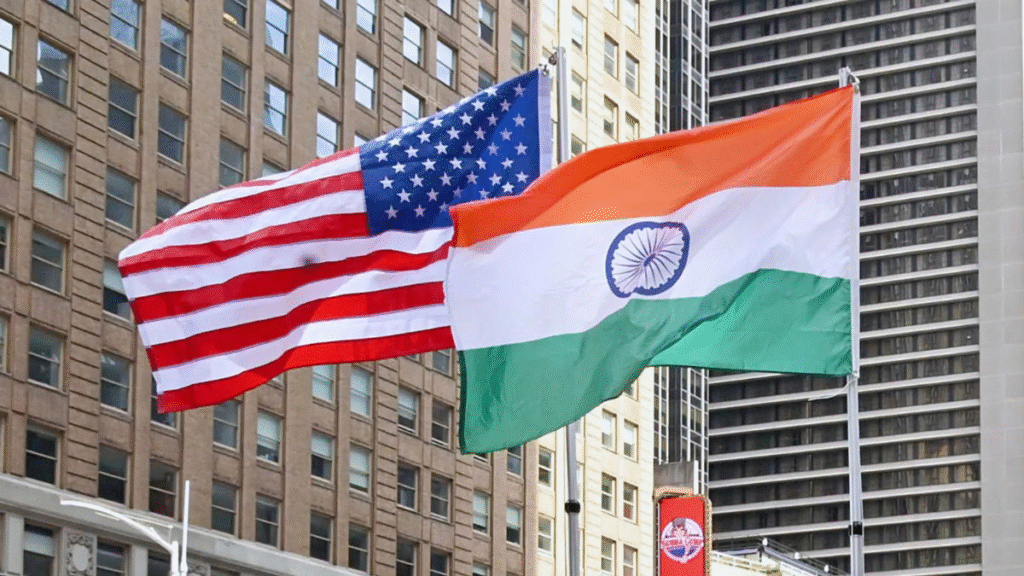
Phase 1: Tariff reductions in select areas—agriculture, leather, chemicals, IT by autumn 2025.
Phase 2: Move towards a comprehensive Bilateral Trade Agreement to reach $500 billion trade by 2030.
Analysts from Citi and ICRIER warn that reciprocal tariffs could impact 87% of India’s $66 billion exports to the U.S., with pharma and autos most vulnerable
“India retains a 45% total cost advantage… instead of playing defensively, India should use this tariff situation as an opportunity to expand exports to the U.S.”
The potential move by the Trump administration to cut U.S. tariffs on India to below 20% signals a pivotal moment in bilateral relations. For India, it’s a chance to lock in better access to the world’s largest consumer market, drive export-led growth, and differentiate itself from its regional competitors.
But deadlines, domestic sensitivities, and legal constraints mean the agreement is far from guaranteed. Both nations must balance urgency with careful diplomacy to hit fall 2025 milestones.
Bottom line: If sealed, the tax cut could reduce costs for Indian exporters by up to 20–30 percentage points, fueling growth in key sectors. For the U.S., it offers cheaper imports but through a tightly negotiated, strategically phased deal.
Read Also : Jasprit Bumrah Reveals Why He Didn’t Celebrate Iconic 5-Wicket Haul at Lord’s Test – ‘I’m Not 21 Anymore


